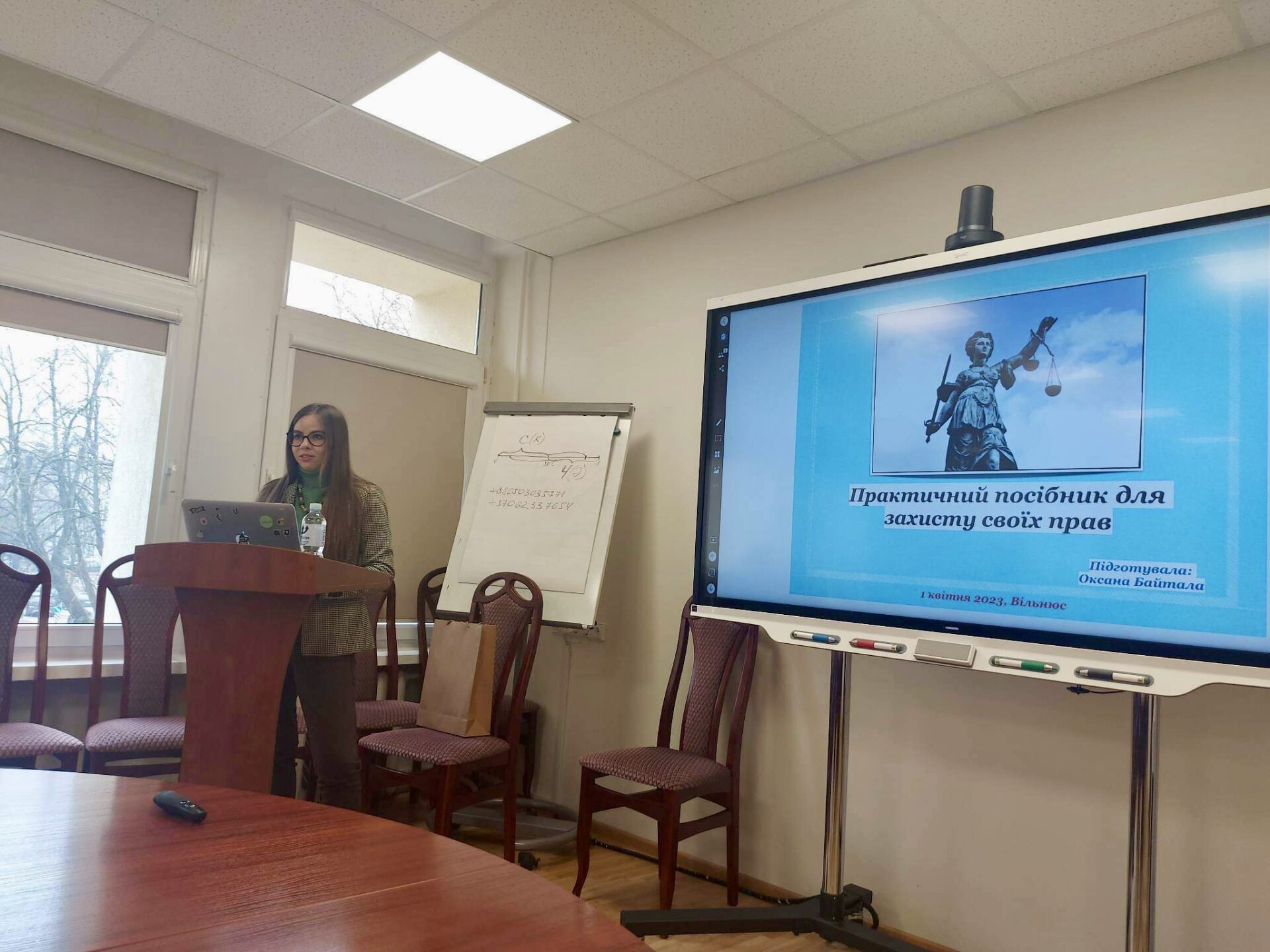- 2014/07/27
The results of the Lithuanian language exam between 2008-2013

 2013 was the first year that secondary school graduates from the schools of national minorities had to pass the unified Lithuanian language exam, like graduates from schools working in the Lithuanian language. The policy, which national minorities opposed, was introduced in the new Law of education accepted by Parliament on 17 March 2011.
2013 was the first year that secondary school graduates from the schools of national minorities had to pass the unified Lithuanian language exam, like graduates from schools working in the Lithuanian language. The policy, which national minorities opposed, was introduced in the new Law of education accepted by Parliament on 17 March 2011.
In February 2013, the minister for Education and Science of the Republic of Lithuania issued a regulation according to which there were to be concessions during the Lithuanian language exam for those who graduate from the schools of national minorities. The students were to write a shorter essay, they were to have the right to use dictionaries and they were to be allowed to make more mistakes. However, on 18 June 2013, the Supreme Administrative Court of Lithuania decided that the concessions are incompatible with the constitutional rule of equality and should be abolished. All in all, before 2019 some of the concessions will be reintroduced, namely that students will be allowed to make more mistakes. But one should remember that the Lithuanian language exam is the only exam in Lithuania which students have to pass in order to obtain their certificate. This means that it is the most important exam for all secondary school graduates and that a student should get at least 30 points to pass it.
The European Foundation of Human Rights (EFHR) compared the 2008-2013 Lithuanian language exam results of the students attending the schools of national minorities and those attending Lithuanian schools. The data presented by the National Examinations Centre shows that the number of national minority group students who took the exam in these years is decreasing. A systematic decline started in 2009 – since then up until 2013 there was a decrease of 25,9%. On the other hand, the number of students from Lithuanian schools fluctuated (as shown in Table 1). A growing number of students in the schools with the Lithuanian language is interesting when taking into account the persistent baby bust.
Table 1: The number of secondary-school graduates who took the Lithuanian language exam
| Year | 2008 | 2009 | 2010 | 2011 | 2012 | 2013 | |
| The number of students | Lithuanian schools | 16416
|
18415
|
20976
|
22793
|
21429
|
18667
|
| Schools for national minorities | 1697
|
1758
|
1714
|
1583
|
1562
|
1303
|
|
The number of students admitted to take the Lithuanian language exam as their mother tongue or as official language is presented inTable 2.
Table 2: Students admitted to take the Lithuanian language exam
| Year | 2008 | 2009 | 2010 | 2011 | 2012 | 2013 | |
| Students admitted to take the exam | Mother tongue | 20699 | 22682 | 25623 | 27546 | 25655 | 23456 |
| Official language | 2310 | 2192 | 2051 | 1909 | 1809 | ||
| Students who passed the exam | Mother tongue | 20524 | 22580 | 25415 | 27321 | 25436 | 23226 |
| Official language | 2295 | 2186 | 2044 | 1893 | 1790 | ||
After analyzing the data one could come to the conclusion that making students take the unified version of the exam resulted in the national minority school students obtaining worse results than before.
In 2013 there were only 5 students out of 1303 secondary-schools graduates who were given the highest number of points possible, that is almost three times less than a year ago. The highest number of students who were given the highest number of points possible, that is 100 percent, appeared between 2008-2011 (18-20 people). On the other hand there were more Lithuanian schools students who were given the highest number of points possible in 2013 (1,8 percent) than before, which Table 1 shows.
Table 1: The number of students who were given the highest number of points (100 percent)
| Year | 2008 | 2009 | 2010 | 2011 | 2012 | 2013 | |
| The number of students taking the exam | Lithuanian schools | 0,9% | 1,% | 0,9% | 1% | 1% | 1,8% |
| Schools for national minorities | 1,2% | 0,7% | 1,3% | 1,1% | 0,9% | 0,3% | |
Most of the results of the students attending schools of national minorities who took the exam in 2013 oscillated between 16 and 37 percent. Only 25,1 percent of the students, that is 327 secondary-school graduates scored more than 50 percent. In comparison with 2012 it was quite a visible decline as in 2012 over two times more students, that is 779 secondary-school graduates, scored more than 50 percent, which was 49,9 percent of all the students taking the exam. On the other hand in 2012 41,1 percent of the students attending Lithuanian schools scored more than 50 percent so the results were slightly worse than in 2012 when 41,1 percent of the students scored more than 50 percent. It shows that those with the worst results were mostly students from national minority group schools.
Table 2: The number of students who scored more than 50 percent
| Year | 2008 | 2009 | 2010 | 2011 | 2012 | 2013 | |
| The number of students taking the exam | Lithuanian schools | 45,1%. | 48,5% | 48,1% | 48,3% | 49,5% | 41,1% |
| Schools for national minorities | 46,6% | 49,7%, | 50,1% | 49,7%, | 49,9% | 25,1% | |
After introducing the unified version of the exam the results of the Lithuanian language exam were worse both in the schools of national minorities and in Lithuanian schools which may mean that the exam is more difficult.
In 2013, 148 national minorities schools students, that is 11,4 percent of the students taking the exam, did not pass it, which is more than in 2012 (5,2 basis points higher). On the other hand in 2013 9,5 percent of the Lithuanian schools students did not pass the exam which is, compared with 2012, 2 basis points higher. You can compare the results in Table 3.
Table 3: The numer of students who did not pass the exam
| Year | 2008 | 2009 | 2010 | 2011 | 2012 | 2013 | |
| The number of students taking the exam (%) | Lithuanian schools | 12,7% | 6,4% | 8,3% | 7,8% | 7,5% | 9,5% |
| Schools for national minorities | 21,89% | 6,3% | 8,2% | 6,4% | 6,2% | 11,4% | |
Although the results from 2013 are lower both in the schools for national minorities and in Lithuanian schools when compared to 2012, the decline is considerably greater in the schools of national minorities, which makes us think that the unified version of the Lithuanian language exam and not enough time to make up the curriculum difference in teaching the Lithuanian language contributed to worse exam results for those students.
|
The results analyzed are the results of the secondary school graduates (candidates) from the schools of national minorities and Lithuanian schools in a given academic year. We do not take into consideration past secondary-school graduates or students who retook the exam. Therefore, the total number of students considered is lower than the number of students admitted to take the exam. The data is available from the National Examination Centre (Nacionalinis egzaminų centras). |



